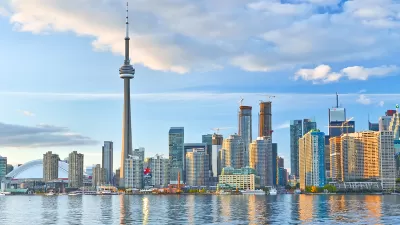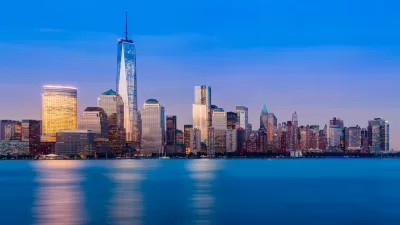One architecture critic addresses two skyscraper-related conundrums: Decorative lighting that tops the buildings are energy inefficient, and they are dangerous to migrating birds.
"New York structural engineer David Scott, the chairman of the Chicago-based Council on Tall Buildings and Urban Habitat, put that point in a broader context when I reached him by phone on Monday.
'If you just turned everything off, you would lose a lot of the [urban] vibrancy,' he said. 'If you weigh up the efficiencies you get by people working and living in a city, particularly a city that's served by public transport, you can afford to be generous with some of the lighting.' Many skyscrapers around the world, particularly in Hong Kong, are now lit with LEDs that use far less energy than conventional spotlights, he added.
Call it the 'bright lights, big city' theory of urban planning: By doing a modest amount of decorative lighting, either atop of a building or in places that accent key architectural features, you prevent the city from feeling like a ghost town. That encourages more people live in dense urban areas. And density saves energy. You spend a little energy to save a lot of energy.
A green city is not a blacked-out city."
FULL STORY: Must skyscrapers be bird-killers? Not necessarily

Alabama: Trump Terminates Settlements for Black Communities Harmed By Raw Sewage
Trump deemed the landmark civil rights agreement “illegal DEI and environmental justice policy.”

Study: Maui’s Plan to Convert Vacation Rentals to Long-Term Housing Could Cause Nearly $1 Billion Economic Loss
The plan would reduce visitor accommodation by 25% resulting in 1,900 jobs lost.

Planetizen Federal Action Tracker
A weekly monitor of how Trump’s orders and actions are impacting planners and planning in America.

Wind Energy on the Rise Despite Federal Policy Reversal
The Trump administration is revoking federal support for renewable energy, but demand for new projects continues unabated.

Passengers Flock to Caltrain After Electrification
The new electric trains are running faster and more reliably, leading to strong ridership growth on the Bay Area rail system.

Texas Churches Rally Behind ‘Yes in God’s Back Yard’ Legislation
Religious leaders want the state to reduce zoning regulations to streamline leasing church-owned land to housing developers.
Urban Design for Planners 1: Software Tools
This six-course series explores essential urban design concepts using open source software and equips planners with the tools they need to participate fully in the urban design process.
Planning for Universal Design
Learn the tools for implementing Universal Design in planning regulations.
Caltrans
Smith Gee Studio
Institute for Housing and Urban Development Studies (IHS)
City of Grandview
Harvard GSD Executive Education
Toledo-Lucas County Plan Commissions
Salt Lake City
NYU Wagner Graduate School of Public Service




























